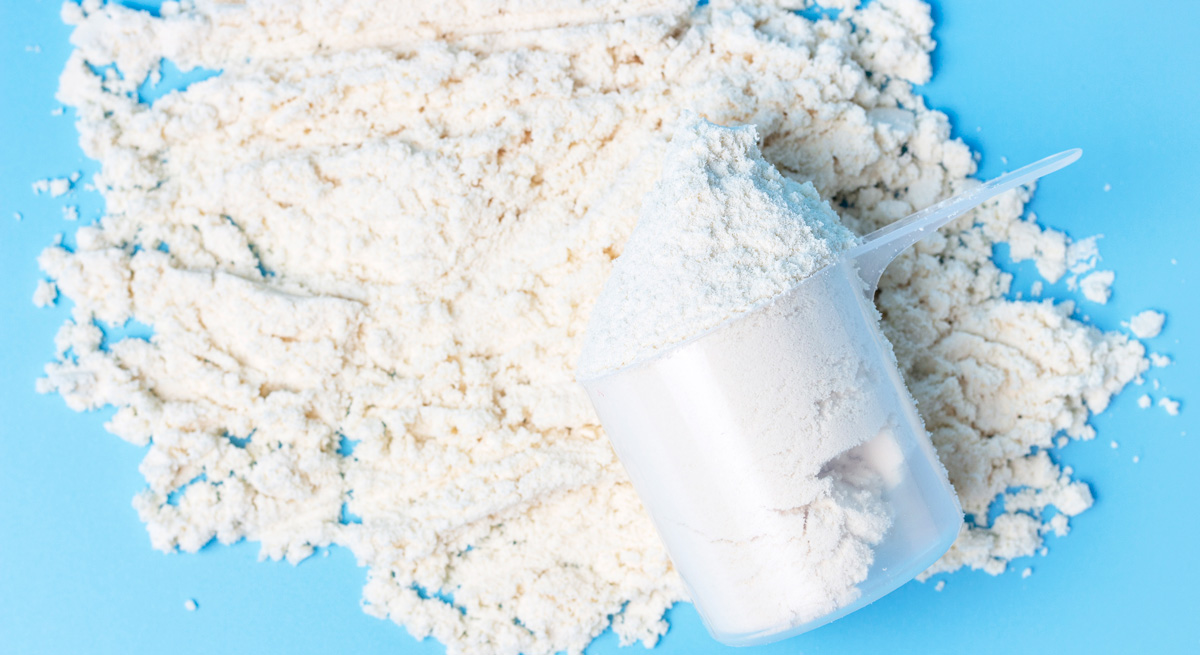

Whey: the history of this very important element in the modern market
From discarding the dairy industry, to an indispensable supplement for those seeking high performance in training. Today we will explain to you the importance of whey in your life and how the efforts of different sectors of the industry brought this product into your home.
This is one of those delicious articles. We will tell a story and it will be a little time travel. At the same time, we want to draw parallels to show how their performance in training has a lot to do with the insistence of several producers in search of more effective solutions.
Therefore. Let’s get started.
See also: Animal feed: details on production
From cheesemakers’ disposal to Whey Protein: how whey came about
You already know that Whey Protein is a nutritional fever supplement in gyms. What you might not have known, is that it is closer to the field than you might think.
Despite its English name, this powdered substance added to drinks, cookies and bars is made from the famous whey, a valuable by-product of cheese making.
Until recently, this serum was seen in Brazil as an industrial residue, something that was discarded by the cheesemaker, As Caroline Mellinger, researcher at Embrapa Agroindustria de Alimentos, said in an interview.
Whey has always been known for animal feed, mainly for pigs, but in the last two decades it has been used in the manufacture of dairy drinks, such as Whey Protein.
This is processed whey, in a concentrated version. What added value to the product. Whey Protein is helping to make whey popular.
Read more: Whey questions Protein
How whey production works
In one of the data created by the Brazilian Association of Cheese Industries (Abiq), Brazil produces about 850 thousand tons of cheese per year. Of these, it is estimated that for each kilogram of cheese produced, eight liters of whey are generated.
So, the trend shows the potential that drives manufacturers. For example: Sooro started its activities processing 150 thousand liters of serum per day, this in 2001. Just over a decade later, our installed capacity was already over 1.2 million liters.
If before, serum was seen as a problem and not as a high-level product. To give you an idea, the industry imported whey powder, while the cheesemaker threw away the raw material.
This changed to the same extent that the national serum started to be valued and gained quality. For example, at the beginning of this decade our numbers were 16.7 thousand tons of whey solids, with sales of R $ 57.5 million.
In addition, still in 2011, with investments of R $ 20 million in technology, we started the Brazilian production of Whey Protein Concentrate, a product that represented 1,200 tons of the total manufactured by the company last year.
There is more, there is a certain movement to replace powdered milk with powdered whey in the recipe for breads, cookies and ice cream. Since the ingredient is also nutritious and performs well in the industrial process.
Read also: Know your own body: tips to improve performance
The history of whey in Brazil goes hand in hand with our history
Here at Sooro the collection of whey also happens in natura, that produced by cheesemakers. The raw material goes through a filtering and drying process. About 94% of the serum is composed of water, which is treated and returned to the environment, while the solids will compose the final product.
It is good for both parties, as cheesemakers get rid of an environmental problem, and are not concerned with the disposal of the material.
In 2013 Sooro produced more than 18 thousand tons of powdered serum and earned R $ 65 million, an increase of 13% compared to the previous year.
Perhaps the date is not so important, seen today. But just remember that just 12 years earlier (in 2001), whey was seen as an environmental problem and even an obstacle in the life of the country’s cheesemakers.
How Brazil works whey
The São Paulo Dairy Industries Union (Sindileite) estimates that Brazil already has the capacity to produce more than 115 thousand tons of whey powder per year. The biggest obstacle for this market to grow nationally is technology. The serum is very perishable, needs to be refrigerated, and transported properly.
We are aware that the sector is growing above 10% per year.
Health in Summer: how to choose the best time to train
Summary: Looking at the past gives us strength to build the future
We had a long way to go before national whey was in quality products. So that you can acquire your Whey Protein at a fair price and can train with an effective product, a lot of work has been done.
Now, we look at the coming years always thinking about expansion and quality. These are our struggles.
We hope today’s article has shown you how passionate we are about what we do and why the industry always needs to look to the future and invest in innovation.
It is the innovation that has brought us here and it will continue to guide the companies of the future.
Did you like today’s article? Keep following our blog. We have incredible tips on high performance food.
Thanks for reading and see you next time.